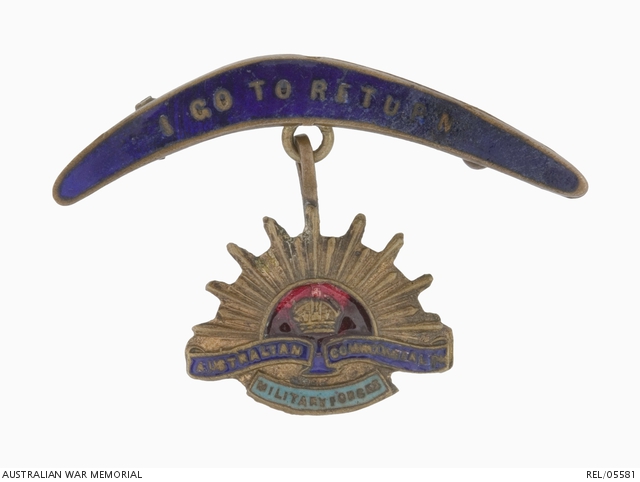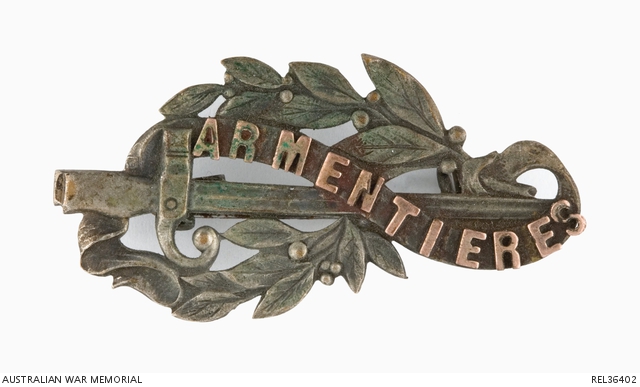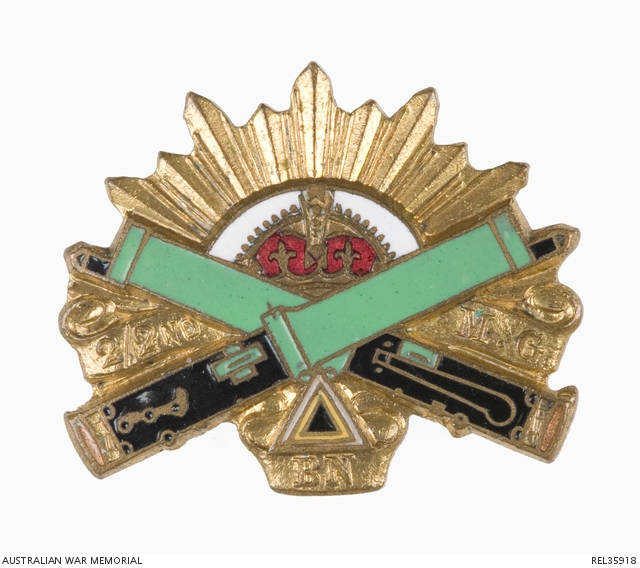Commercial Sweetheart Jewellery
One thing we often get asked about is jewellery made during the First and Second World War. This blog will look at some examples of sweetheart jewellery produced by commercial companies and jewellers. Trench art sweetheart jewellery will be examined at a later date.
This type of jewellery was often worn by female relatives, including girlfriends, wives or mothers as a symbol of pride, support and affection for a loved one serving in the armed forces. They were given as a gift or purchased by the women themselves. Some jewellery was mass produced to a type or pattern, varying in quality and materials; while other jewellery was specifically commissioned from jewellers and made to personal requirements. Unless the piece of jewellery has a makers mark or is on its original card or in an original box, it can be difficult, if not impossible, to determine what company or jewellers made the item.
Brooches were very popular in both world wars and make up the bulk of the Memorial's collection of sweetheart jewellery but other militray themed items, such as lockets, pendants and rings were also made and purchased.
"I go to return" sweetheart brooch given to a loved one during the First world War. The boomerang was a popular symbol.
Tourist jewellery
During the First World War, Australian troops were popularly known as the "six bob a day tourists", a comment on their high income, especially in comparison to soldiers of other nations. This high income and being so far from home for many years meant a great deal of money was spent on souvenirs to send home to loved ones, including jewellery. One type of jewellery purchased was tourist jewellery of the towns or countries the soldiers were serving in or visiting. These often have town coats of arms or names. Some may have ben made before the war, while others were made during the war years. This style of jewellery does not appear to have been as popular during the Second World War as there are fewer examples about.
Enamelled Egyptian brooch with a pyramid and the Sphinx. Probably pre-war manufacture.
Commercially produced souvenir brooch, from Ypres, Belgium, possibly pre-war.
Armentieres brooch made during the war. The base of this brooch with the bayonet and wreath was used for other types of brooches, including REL36403 'WE'LL GET THEM'.
Service themed jewellery
Rising Sun badge themed jewellery was very popular during both world wars. The high pay during the First World War made it worth the while of jewellers and souvenir sellers at home and overseas to have a variety of Australian themed items made. While pay was not as high during the Second World War, there was still a good range of products available. During both wars Navy themed jewellery was available, although presumably due to the smaller numbers of Navy enlistees compared to Army, the Navy themed jewellery available was lower in quantity and style. After the advent of the Royal Australian Air Force in 1921, RAAF themed jewellery was available during the Second World War, often based on badges worn by air crew, such as pilot's brevets, and cap and hat badges.
Rising Sun themed jewellery
Mother of pearl Rising Sun brooch from Palestine. These were sold in both the First and Second World Wars.
Second World War RAAF Jewellery
Enamelled RAAF brooch. The wings once contained diamantes but most are now absent.
Navy jewellery
- Bridging train
Merchant Navy
Colour patch brooches
Metal and enamel brooches made in the shapes of AIF colour patches were very popular during the war. By October 1917, the Defence Department had received so many applications for permission to make colour patch brooches for sale that the Minister for Defence, Senator George Pearce made an ammendment to the War Precautions Regulations to allow for the manufacture, sale and wearing of these brooches, as long as the unit number or designation was not shown. Unit themed brooches continued to be popular during the Second World War. Some badges were very simple and inexpensive, while others were very detailed and elaborate and made from high quality materials, such as gold and silver.
Commemorative jewellery
Some families remembered lost loved ones through commemorative jewellery. In other instances, the jewellery was a gift to a bereaved parent. Some of the most poignant are original, specially commissioned pieces with specific meaning to the family and the service person being commemorated. They are usually made of high quality materials. This is in addition to the standard portrait lockets, which were also used to commemorate family members serving or deceased. Some commemorative jewellery remembered an event or a place, such as Gallipoli.
Memorial brooch made to commemorate Corporal Allan Hislop who died as a prisoner of war in October 1916. After his death the family had four brooches made in his honour, one for each of his four sisters. The brooch includes his colour patch, rank insignia, the date they believed he was taken prisoner and the date he died.
Memorial locket given to Mrs Harriet Lukey in memory of her son, Private Charles William Moyle Lukey, a jeweller from Brunswick. Originally reported as missing at Fromelles, he was later confirmed killed in action. The front of the locket features her son's initials in black enamel.
Engraved memorial brooch given to the mother of 411768 Sergeant John Samuel Freeth, by his friends at Angus & Coote. Freeth was killed on exercise over the north Sea on 24 May 1943, when his aircraft collided with a Beaufighter. Mrs Freeth had refused to give up hope that her son had survived, and it was hoped that by giving her this brooch that she would come to accept his death.
Photograph locket commemorating members of the Bloy family in the Second World War.
Gold Gallipoli themed brooch with the southern cross in gems. Made in Australia




























